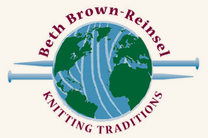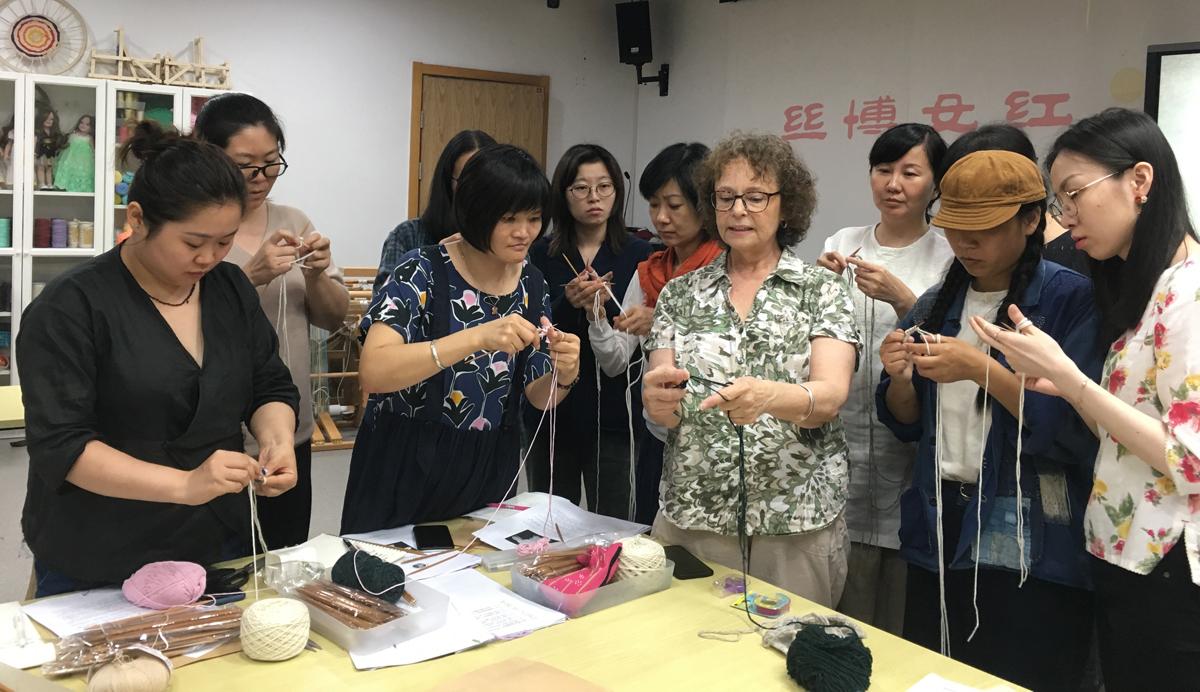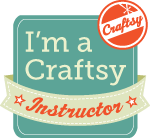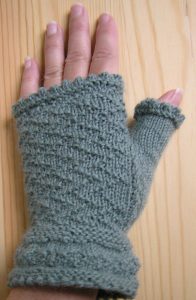Beth teaches a group of knitters at the National Silk Museum in Hangzhou, China, 2019.
When I was in college, writing books and designing knitwear were not activities I ever imagined I would be involved in. As a child and a teenager, making things, be it sewing, crochet, rug braiding, embroidery, macramé, or knitting, made me happy and satisfied something deep within me. In my twenties, I taught myself to spin and dye with vegetal dyes, and took weaving lessons, but knitting had been second nature to me since I had learned at the age of seven. When knitting, I was always changing patterns to something I preferred, and finally, I started designing garments from scratch, which led me to writing…and teaching.
Writing
In the 1980s I wrote many articles for CastOn, the magazine of The Knitting Guild of America (TKGA, now The Knitting Guild Association). It was fun and I have always loved to write. After teaching my gansey class for the national guild at two different conferences, I was asked to create a correspondence course on ganseys. That took three months to develop the curriculum, design and knit the samples, and write up the lessons. When I had finished, it occurred to me that I had more to say and that there was probably a book in me somewhere.
For two years I planned and wrote and knitted and in 1993, my book Knitting Ganseys was published by Interweave Press. The process was both exhilarating (it felt SO creative!) and terrifying (the pressure was awful). Writing a book is incredibly difficult– for me, anyway. It requires intense focus for long periods of time, especially in the editing phase. But it is also very rewarding to produce something you can finally hold in your hands to read.
Twenty-five years later, in July 2018, the new edition of Knitting Ganseys, Expanded and Revised was released. I really thought it would be easy to create this new edition. After all, I had already written it, right? HA! I found it to be exhilarating and terrifying all over again!
I don’t write articles much anymore, as I don’t have as much time to devote to outside media. Creating new workshops (writing the handouts) and patterns take most of my time. My newest project is my School of Knitting Traditions. I am reworking my many classes and the handouts to be offered online. So I am still writing and designing, and photographing, and videotaping, and planning… and knitting just a little bit when I can.
Teaching
I remember as a young girl, maybe 8 or 9, making up “school papers”, little quizzes for my sister who was 5 years younger than I. But it was when I began to create classes for the fiber shop I co-owned, Spinners 3, in the early 1980s that I discovered I truly loved teaching. Coming from a family of teachers, though never formally trained as such, I found it so exciting to research a subject, create the syllabus, write up the handout, and best of all, communicate my love of knitting to those who were interested in traditional knitting: my students!
My style is that of a hands-on teacher. I will lecture in front of the room for a little while, but I also use my digital projector for video and slide shows to illustrate techniques and artifacts. Most of the time, I am “doing my rounds”, constantly moving from student to student to be certain everyone understands what they are doing and why. It is important to me to make every student feel comfortable and nurtured in my classroom. Making mistakes is a part of life, and learning from them is invaluable.
I usually bring one or two 8-foot-tables-worth of samples to show my class, which all help to reinforce the aspects of the workshop I am teaching. My handouts are thorough and inclusive, designed to help the students both learn the material during the workshop and to serve as reference materials afterward. They consist of charts and photos as well as the instructions for the class project, also containing a list of suggested books for further reading and sources for appropriate traditional yarns. For my longer classes, the handouts run between 30 and 40 pages in length.
Many conferences prefer the three-hour class model, but I find in that short time frame, it is difficult to go in-depth as I like to do. I prefer 6- and 12-hour classes to give the students time to create muscle memory and to assimilate what they have learned. My favorite setting is the 3-day retreat I hold in Vermont three times per year. Here, we all can be relaxed, knitting at our individual paces, knowing the evenings can be used for “catch-up” if needed.
To keep informed about new patterns and classes, please subscribe to my newsletter–the link is in the bottom footer of this page.
Testimonial:
“Beth Brown-Reinsel is a remarkable knitting teacher. Her workshops are structured around a specific traditional garment. Students are lead through the process by actually knitting a small doll-size garment, so each technique is learned in context. Her deep historical and technical knowledge make her classes an immersive experience in the evolution and culture of knitting. Her teaching style is warm, gentle, and practical. She instantly calibrates to each knitter’s level, which makes the techniques accessible and easy.” – Susan A.








